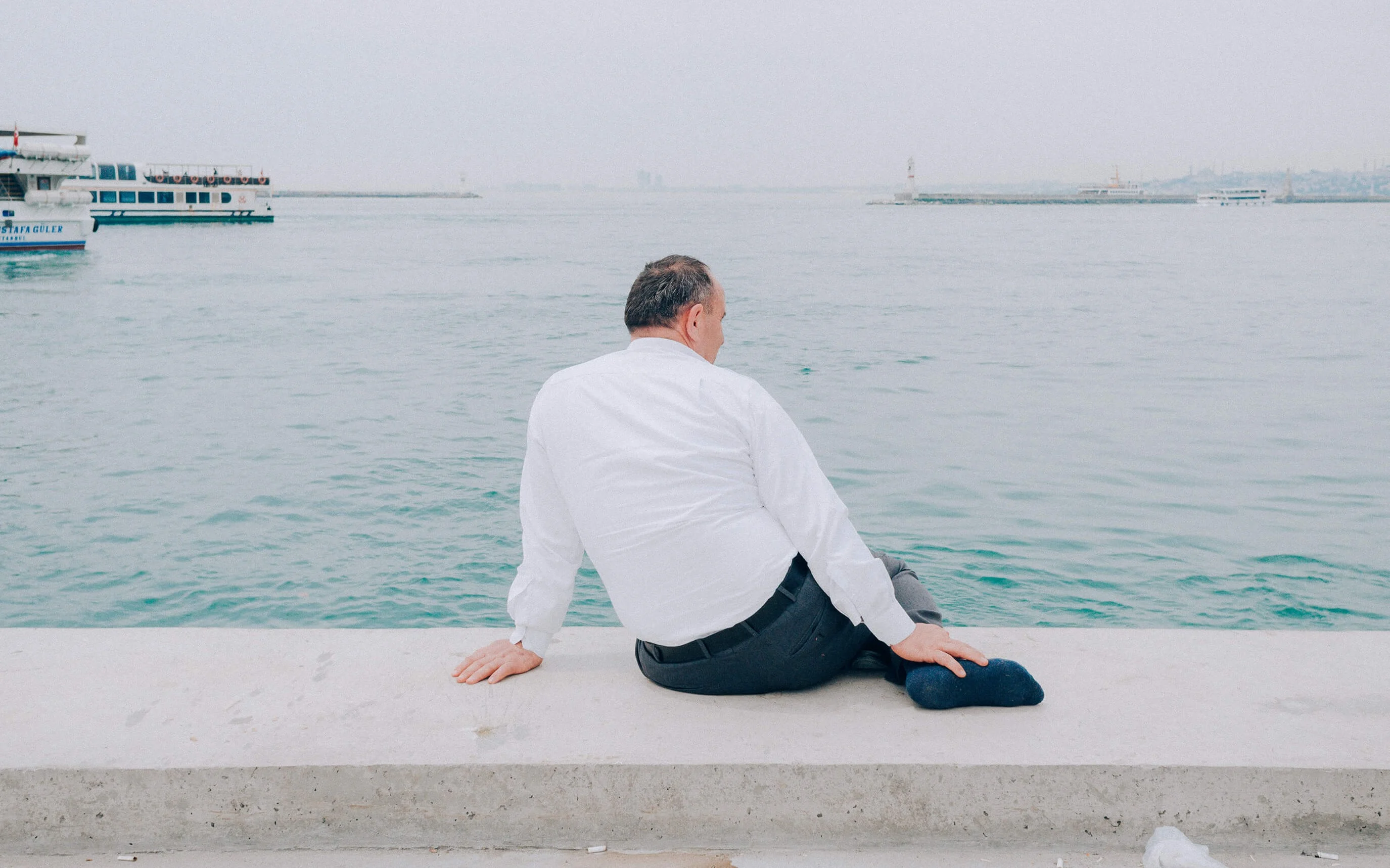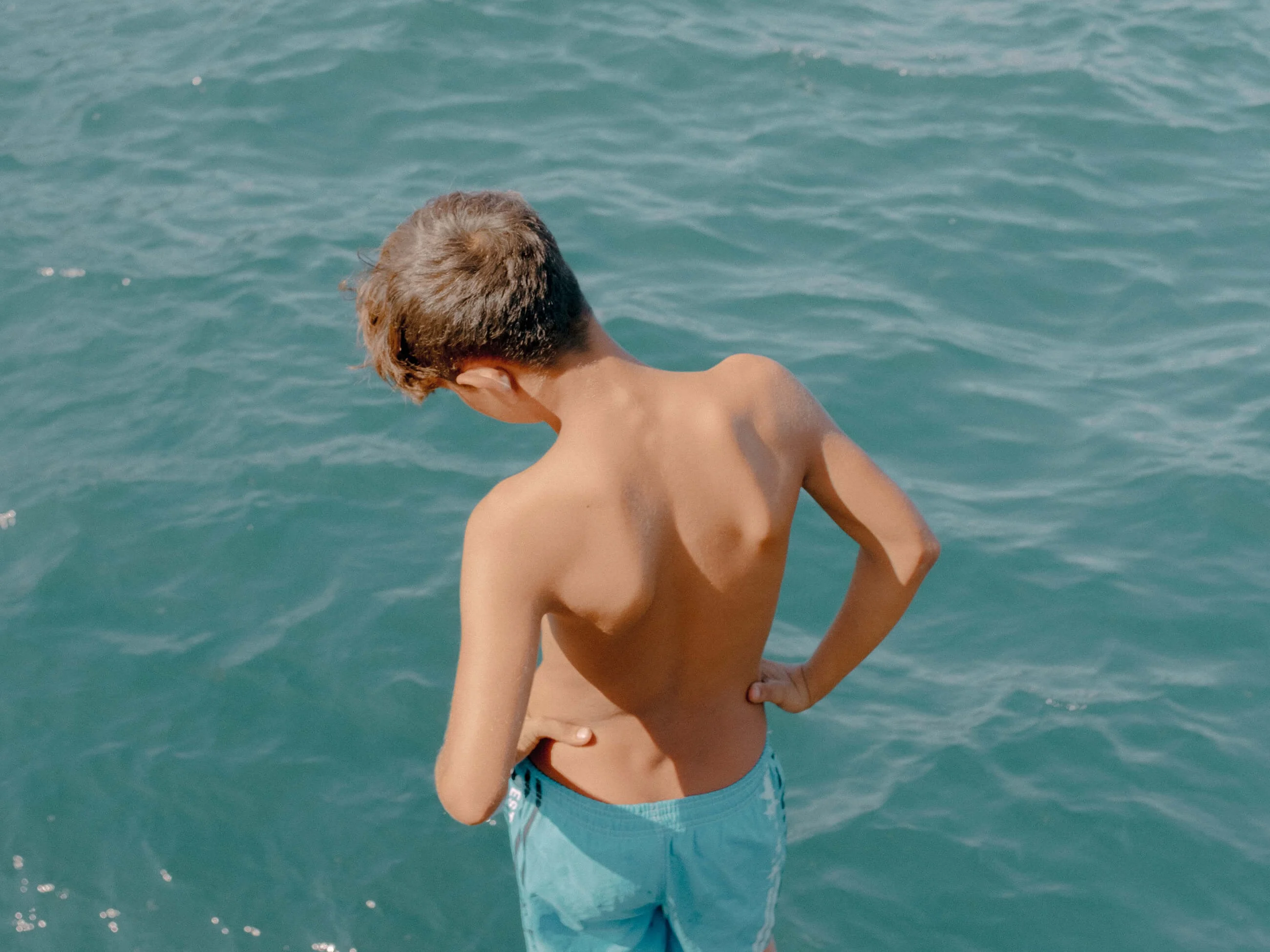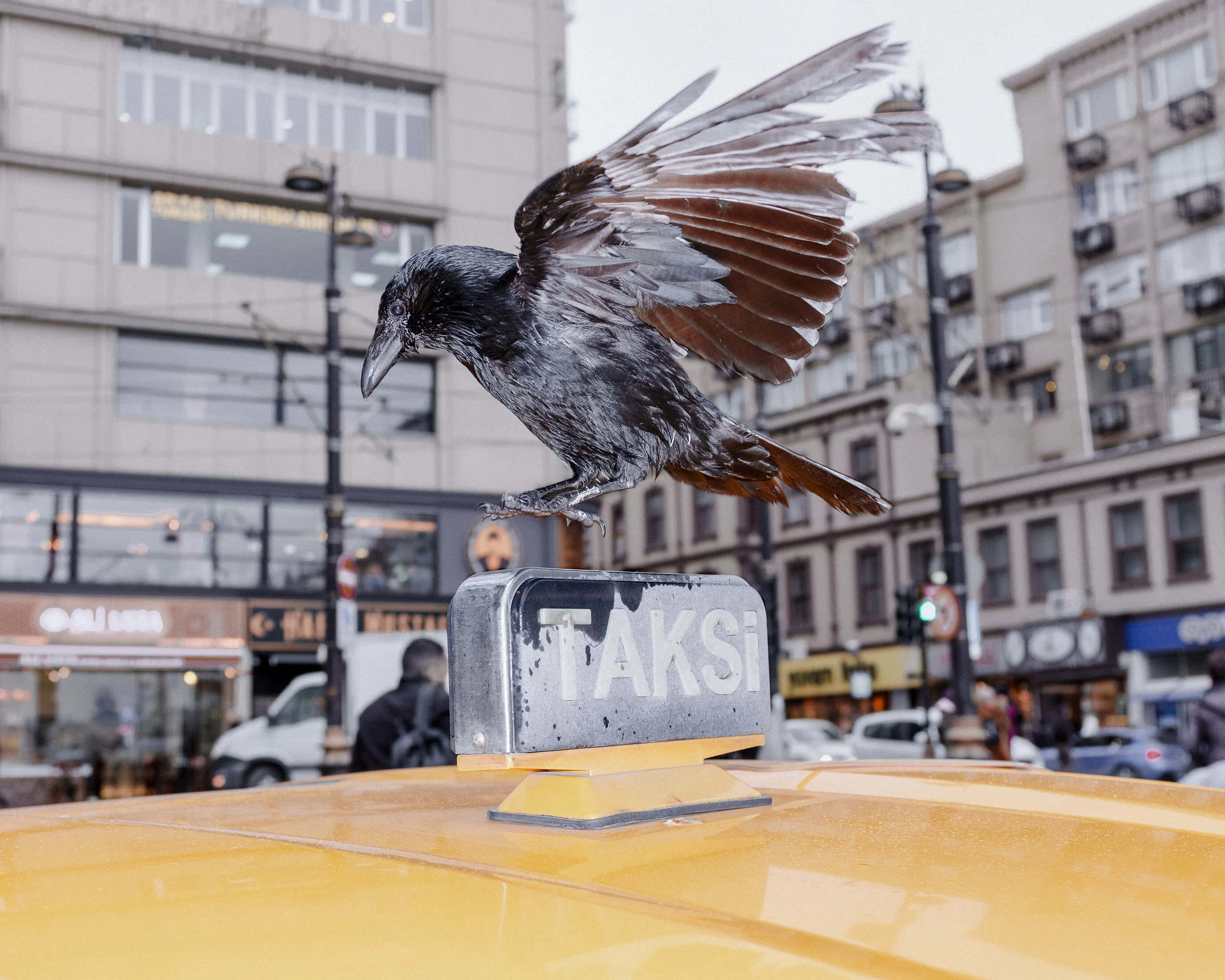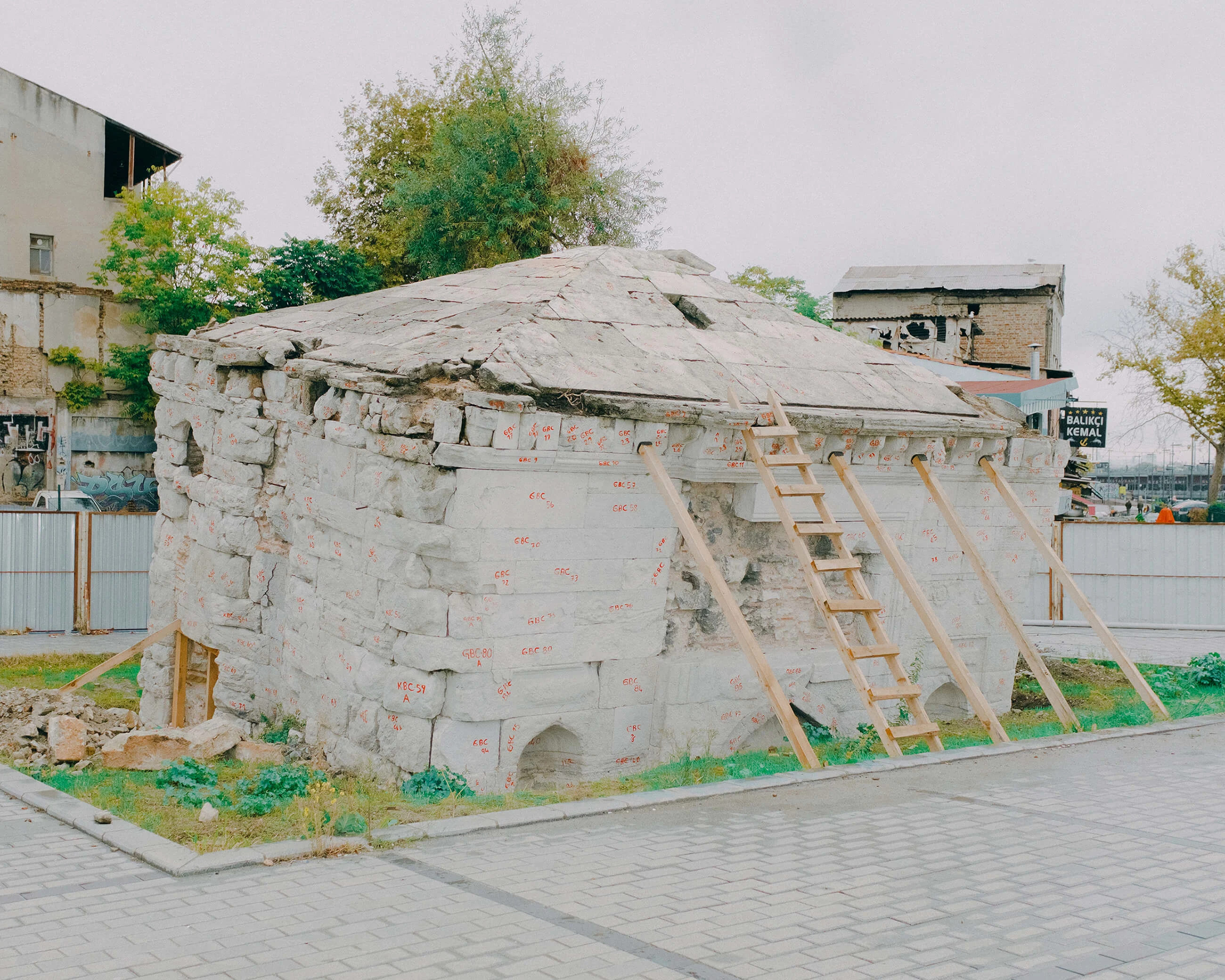

In all his years, photographer Ci Demi has never left Turkey, and the vast majority of those years have been spent in his beloved Istanbul. He spends his days capturing the city, from its majestic sights to intricate moments in its bustling streets. Here, photographer and writer and Istanbul resident Monica Fritz takes us on a tour of the city, using Ci’s shots of the place he calls home as a visual guide.
Cihan Demiral, known by his nom de plume Ci Demi, was born in Istanbul, and has lived all his life there. Following a difficult break-up with his ex-wife, Ci quit his copywriting job and decided to go into photojournalism, which brought his love of storytelling back to life, and he threw himself wholly into the spirit of the venture.
All of a sudden, he was staying with shamans in the forest, he entered the private world of Turkish Jews, he followed many violent political rallies, and he even went to the war in Turkey’s Southeast. His conceptual photography style is similar to prose: “All my stories are fictional,” he says. From a young age, his creativity was manifested through poetry, and the Turkish poet Enis Batur, who is known for his experimental style, is his childhood hero.

In spite of several international exhibits, including Les Rencontres d’Arles, Ci has never been abroad (the closest he’s ever been to the rest of Europe was watching Italian horror films, the prelude to a degree in Italian Literature at Istanbul University.) He’s not interested in photographing anywhere but Istanbul, though. “I just want to be a tourist in my own city,” he says. “I think this city could easily be a country on its own.”
Let Ci's photos show you around some of his favorite parts of the city he calls home, as fellow Istanbul local Monica Fritz tells you all about what you're seeing.
Kadıköy

The place
Kadıköy is one of Istanbul’s most secular neighborhoods, popular with young people and home to much of the city’s high-society. On the weekends, its bars, cafés, and restaurants are full. Its walls are covered with street art and the atmosphere is like Turkey’s answer to New York’s East village. It’s the home of Istanbul’s underground music and art scenes, and it’s known for its political protests. There aren’t many historical monuments left here, except for some small orthodox churches. It has a lovely coastal walkway, and quiet tea gardens under ancient mastic trees.
The photo
Ci calls this one “The Merman.” It’s part of the ongoing series “Unutursan Darılmam” (“I Won’t Be Sad If You Forget Me.”) “After I left my former ad agency, I focused on conceptual ideas, even fictional ideas,” he says. “This shot is a part of that. When you look at it, it’s a picture of a man sitting by the sea, but in the context of my story he’s one of my characters. I approach my stories as if I’m writing a novel.”
This is a poetic, Turkish moment in the Asian neighborhood of Kadıköy. It’s not often that you see a businessman take his shoes off and sit in front of the sea in other parts of the world.
The Bosphorus

The Place
The Bosphorus strait is a natural waterway that divides Istanbul, separating Asia and Europe. It might look like a river, but it’s the world’s narrowest strait to be used for international navigation, and is one of the most difficult in the world to navigate. It’s home to tankers and yachts, ferries and fishermen, and sometimes even submarines and warships, and is very much a part of the city’s everyday life, with swathes of people crossing it daily. It’s one of the most magical parts of the city; its currents are strong, there are dolphin seasons, winds that come from Africa and Russia, and the water can turn many colors throughout the year, from deep black to turquoise.
The Photo
This shot is from the 2020-21 series “Eminönü Blues.” “It’s another classic clichéd photo of Istanbul: children jumping into the Bosphorus during the summer. I wanted to catch a quiet moment, a boy contemplating jumping into the sea,” says Ci. “The Bosphorus is where everything starts for me. I belong to the strait, and like the strait I feel that I’m from both Europe and Asia—the two cannot be separated. Most of the time, I feel like I am this city. We’re both the same. The city made me who I am, so traveling from Europe to Asia in an afternoon never gets old for me; I watch myself switching between disparate histories on a map whenever I’m on the ferry.”
Eminönü

The Place
Eminönü is the port of the “historical peninsula.” It’s home to the spice market and the splendid Yeni Cami (or “New Mosque” which, despite its name, was constructed in the 17th century). Rüstem Pasha Mosque can also be found there, with its stunning 16th century tile work. There are intense crowds buzzing in its back streets in search of bargains, and it’s Istanbul’s busiest and most colorful marketplace. Eminönü is best known by the locals as the place to buy cheap goods.
The Photo
Ci spent much of his childhood in this area with his father, who worked in the clothing industry nearby, and this photo is from the series “Eminönü Blues” (2020-2021.) “There are almost 20 other takes of this picture that were taken in the span of two minutes. The little girl was watching people from where she was lying. When I noticed these two people with the colorful umbrella hats passing by, I knew it was a moment to capture.”
Balat

The Place
Balat is the Istanbul neighborhood on the Western bank of the Golden Horn. It was once home to much of the city’s Greek Orthodox and Jewish communities, many of whom have since left the city. Despite becoming an UNESCO World Heritage Site in the 1980s, there’s been a whole host of questionable restoration projects there, and on weekends, hordes of people from other parts of the city now flock to its newly opened shops and gentrified cafés. There’s a true contrast between the district’s conservative Islamic municipality and the whimsical atmosphere and colorful houses centered around the Greek Ecumenical Patriarch. Perched above the rest in the middle of it all, on a ridiculously steep hill, like a castle over the Golden Horn, stands the redbrick Fener Greek Orthodox College.
The photo
Ci himself lives in Balat, and this shot is from the series “Dark Blue Doors And Good Intentions.” “Balat is liquid, it’s ever-changing,” he says. “It’s not as exciting as Kadıköy, but it does have a graffiti scene. This beautiful piece was on the wall of a café. Apparently, they decided to demolish the place and build an apartment building there instead. I took this picture while they were building a wall over the graffiti, essentially sentencing it to the darkness for eternity.”
Sultanbeyli

The Place
Sultanbeyli is a district of Istanbul on the Asian side of the city. With a population of around 300,000, it’s largely known as a suburb. Ci’s grandmother lived there, and he finds it a very interesting area of the city because “it’s extremely hard for one to consider it a part of Istanbul, mainly because it’s a good two-hour bus ride from Kadiköy.” On his way to visit his grandmother, Ci would take photographs of whatever he came across. He cherished these trips and wanted to make the place a part of his stories. “It’s a very under-photographed part of Istanbul,” he says.
The Photo
Ci is extremely loyal to certain parts of the city, usually finding inspiration in places he knows or has spent a lot of his life in rather than those he’s less familiar with. He knows the suburbs on the outskirts of the city, such as Sultanbeyli, very well, and they’re some of his favorite places to shoot, leading to photos like this one from the series “Unutursan Darılmam.” “On this day, while walking to my grandma’s house, I saw the childhood I never had (I had never actually climbed trees. It seemed pointless at the time.) A wave of nostalgia hit me when I saw the boys just sitting in a tree and eating together. They smiled at me and giggled after I took the photo,” Ci recalls. “Normally no one smiles when I take their photo. I remember saying to them: ‘Have fun, you two! I don’t see children like you anymore,’ which was the truth.”
Sirkeci

The Place
Sirkeci is a neighborhood in the Eminönü quarter of the Fatih district in Istanbul. At first sight the area can be a bit of an eyesore, but when you start to turn some corners there are lots of amazing historical buildings, including the famous railway station that was constructed in the late 19th century. It was the easternmost terminal for the luxurious Orient Express, which passengers arrived in the city on from Paris or Venice. The Sirkeci area is just about as “downtown Istanbul” as you can get. The backstreets of rundown office buildings are full of atmosphere, and amongst the crowds, you have fine examples of Ottoman art nouveau, while if you dig deeper you can find old synagogues and abandoned Byzantine cisterns. There’s always bustling traffic and strong sea winds, but it’s a great place to explore on foot.
The Photo
“Sirkeci is where you go if you want to buy a camera,” Ci says. “Hayyam Pasajı is pretty much the center of the photography scene (in terms of hardware) in the city. I’d just bought a new camera there myself when I came across this wet crow, probably freshly bathed. I got closer and with each step I took a photograph. Then I finally got close enough to capture this scene.” The shot is another from the ongoing series “Unutursan Darılmam.”
Karaköy

The Place
The old port of Karaköy is beaming with life on both sides of the Galata Bridge. It’s the entrance to the Golden Horn, and in the evening the view of the beautiful Süleymaniye Mosque is exquisite. On one side of the bridge, among the ancient caravanserais (once inns where travelers and traders on the Silk Road could rest for the night) and long narrow roads, you can find the city’s famous outdoor hardware market. Above, on the hill, is the elegant Bankalar Caddesi (or “banks street,” in English) which was once the center of commerce for the Ottoman Empire. Past the fishermen along the water, you can also find fancy hotels, trendy shops, bars, and restaurants that are packed every evening.
The Photo
“Karaköy is one of the liveliest parts of the city—cafés all over the place, vintage shops, galleries... But during the government-mandated lockdowns in 2020, it was completely empty, and I was able to roam the streets thanks to my press card,” Ci says. “If you’re walking by the sea, you can easily miss this lovely sight. The municipality’s effort to restore the historic relics of Istanbul can be seen all over the city. This old, partially buried fountain is in one of those restoration sites. It is one of the most beautiful things I’ve ever seen.”

